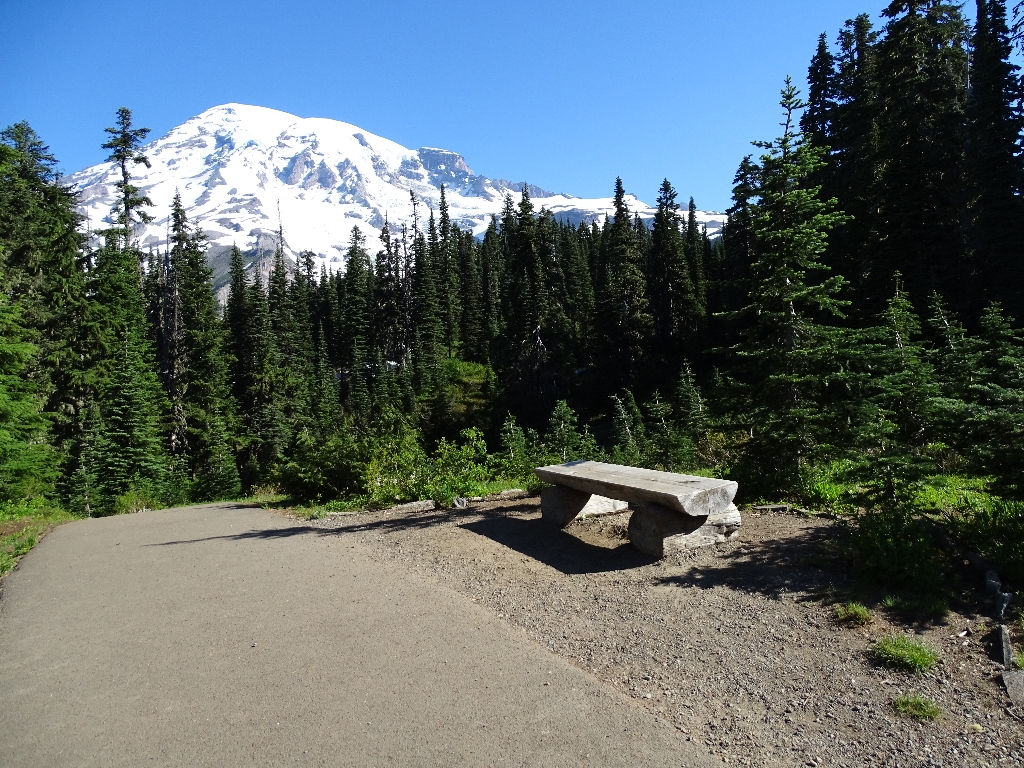
What does the future hold for Mount Rainier? In its short (geological) history, Mount Rainier has undergone many changes – sometimes drastic and destructive, sometimes small and barely noticeable. In our even shorter history, humans have interacted with, influenced, and left our marks upon the mountain. Seismic measurements and other data tell us that the mountain is still an active volcano. Warning systems help us manage the risks of volcanic activity and lahars. Continuous monitoring indicates that our climate is warming with impacts to the glaciers and the ecosystems on the mountain. We know that the mountain will continue to change, but the question is, “How?” As we learn from its history and study is ongoing processes, we get a better understanding of what is possible in the future, and the role that we play in the evolution of the mountain. As you conclude your tour, enjoy one more moment with the mountain and its meadows on this trail and consider: What is something you enjoyed today that you hope others will appreciate many years from now? How can we ensure that these experiences are passed along to future generations?
Is there something we missed for this itinerary?
Itineraries across USA

Acadia

Arches National Park

Badlands

Big Bend

Biscayne

Black Canyon Of The Gunnison

Bryce Canyon

Canyonlands

Capitol Reef

Carlsbad Caverns

Channel Islands

Congaree

Crater Lake

Cuyahoga Valley

Death Valley

Dry Tortugas

Everglades

Gateway Arch

Glacier

Grand Canyon

Grand Teton

Great Basin

Great Smoky Mountains

Guadalupe Mountains

Haleakalā

Hawaiʻi Volcanoes

Hot Springs

Indiana Dunes

Isle Royale

Joshua Tree

Kenai Fjords

Kobuk Valley

Lassen Volcanic

Mammoth Cave

Mesa Verde

Mount Rainier

North Cascades

Olympic

Petrified Forest

Pinnacles

Rocky Mountain

Saguaro

Shenandoah

Theodore Roosevelt

Virgin Islands

Voyageurs

White Sands

Wind Cave

Yellowstone

Yosemite

Zion